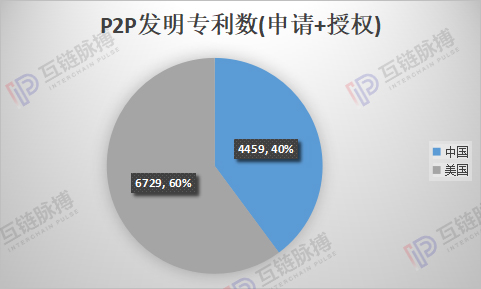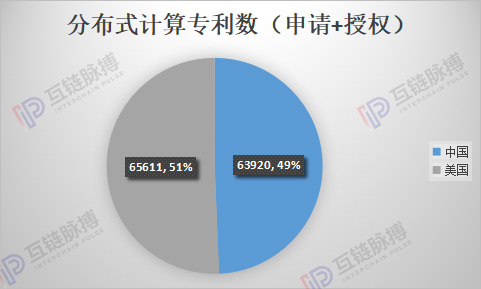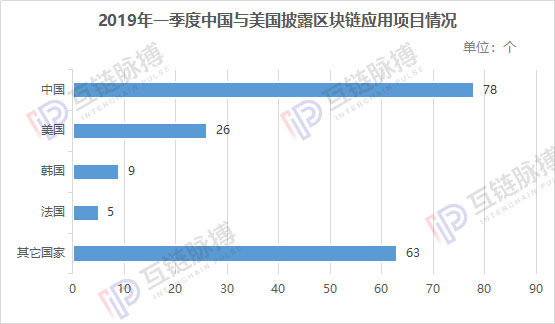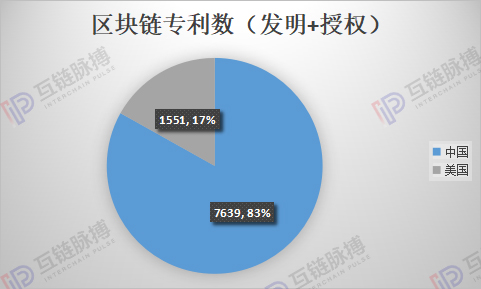The United States is difficult to block China's blockchain technology – China and the United States blockchain technology strength hard competition
Author: Mutual chain pulse commentator Yuan yet
ZTE, Huawei, Dajiang, Haikang… When the United States sacrificed the banner of technological blockade, Chinese enterprises faced challenges in survival. As a blockchain in the next generation of information technology, will China face the same challenges in its development?
Due to the synchronization of the development of blockchains in China and the United States, the open source nature of blockchain technology itself, and the inherent global nature of blockchains, it is difficult for the United States to curb China’s advancement in blockchain technology, from the blockchain. In terms of product form, China has taken the lead in many fields.
Core technology, the US start-up China is not left behind
It is generally believed that the blockchain technology was invented by Nakamoto. So far, whether Nakamoto is a Japanese, an Australian or an American is still controversial. Nakamoto has not applied for a patent in a certain country.
- Mainstream currency market analysis: BTC is at a high level and fluctuating upward trend
- 2019 Encrypted Story Record: Reflections on the Hot Spots
- Observation: Which business model will break out in the Web 3.0 era?
Even so, from a technical perspective, the United States is the main creator of blockchain technology. Blockchain is not a technology, but a collection of technologies that can be verified by the Americans to be the first to invent.
The blockchain core technology has the following aspects: hash algorithm, asymmetric encryption, P2P communication, distributed storage, distributed computing, consensus protocol, and so on.
The hash algorithm is accurate, it can't be called an algorithm, it is a member of the cryptographic hash function family defined by the National Institute of Standards and Technology. At present, most of the SHA series hash algorithm standards commonly used in blockchain are designed by the Society. Including SHA-1, SHA-224, SHA-256, SHA-384, and SHA-512. In addition, the Institute has incorporated other hashing algorithms into the standard. For example, SHA-3 was originally designed by European STMicroelectronics and NXP cryptographers. In October 2012, the American National Institute of Standards and Technology selected the Keccak algorithm as the standard algorithm for SHA-3, which became the choice of many blockchains.
In fact, China has also made great achievements in hash algorithms. Wang Xiaoyun, an academician of the Chinese Academy of Sciences, proposed the collision attack theory of the cryptographic hash function, namely the modulo difference bit analysis method, which improved the probability of cracking five international general hash function algorithms including MD5 and SHA-1. And China has also developed its own standards for hash algorithms, such as SM3. According to the National Cryptography Authority, its security and efficiency are comparable to those of SHA-256.
Another cryptographic technique commonly used in blockchains—the main algorithms for asymmetric encryption—was also invented by Americans. For example, the common ECC (Elliptic Curve Encryption Algorithm) In 1985, American scholars N. Koblitz and Miller proposed the elliptic curve for cryptographic algorithm, the full name: Elliptic curve cryptography, based on discrete pairs in a point group on an elliptic curve over a finite field. Number of questions ECDLP.
China has also invented the elliptic curve cryptography algorithm SM2 and another asymmetric cryptographic algorithm SM9, which is as good as the US standard.
P2P communication technology was originally invented in 1998 by the magical boy Shawn Fanning, who was only 18 years old and created the popular Napster the following year. Napster is mainly used for the sharing of musical works. Sean Fanning did not think that P2P technology became popular in China, and it has risen a number of Internet products such as Thunder, Fast Broadcast, Storm and Sound, and even more, it has become the core technology of the blockchain.
China and the United States are two regions where P2P technology is developing and prospering. According to the INNOJOY patent library search, the United States P2P patent application and authorization patents 6,729, China 4459, China and the United States are the absolute leader, the number of related patent applications and authorizations in the two countries accounted for 80% of the world.

When there is P2P communication, distributed storage and distributed computing are urgently needed. Blockchains need to transfer and store distributed information in a consistent manner through a set of algorithms.
The originator of distributed storage is the "Electricity" that was born in San Francisco, USA on September 6, 2000. Founder Jed McCaleb released a p2p file sharing software which is used by the client and The server is composed of two parts, and the client implements distributed storage.
If we compare patents for distributed storage, China has won an overwhelming victory. China has inquired more than 240,000 patents on distributed storage, and more than 80,000 in the United States.

(Cartography: Inter-Chain Pulse Data Source: INNOJOY as of May 21, 2019)
Whether it is network communication or storage distribution, their ultimate goal is to realize the distributed computing: data flows on each computer node, and each computer node can access the shared data in some way, and finally distributed computing The output is stored and output persistently.
The United States has done relevant research in the embryonic period of the Internet. For example, Carl Hewitt invented the Actor model in 1970. At that time, the concept of the Actor model was far ahead of that era. It was a parallel computing model, which was a very early distributed computing.
However, from the perspective of patent applications for distributed computing, China and the United States are between the two. There are 60,000+ patent applications.

(Cartography: Inter-Chain Pulse Data Source: INNOJOY as of May 21, 2019)
On the whole, the core technology of the blockchain originated in the United States, but in the subsequent research and development, China is not outdated.
Because of the Sino-US trade war, GitHub used by blockchain developers is also facing a blockade to China. Because GitHub.com, GitHub Enterprise Server and information uploaded to any product may be subject to US export control laws, including the US Export Administration Regulations (EAR).
However, from the perspective of China's research and development of blockchain basic technology, it is not as worrying as chip products. In terms of several major blockchain core technologies, China also has its own technical reserves.
China's blockchain application side is leading the way
On the application side, the exploration of China's blockchain is coming out of an independent route different from the United States and already ahead of the United States.
Looking back at the application of the blockchain this year, the United States is crying heavily. Whether it is a traditional enterprise such as JP Morgan Chase, FACEBOOK, Microsoft, or a blockchain original project, it has been embarrassing and has not yet appeared; or the blockchain is used. There are very few projects in the real economy, and it still revolves around the “cryptocurrency”.
In contrast, China's blockchain projects are accelerating. The following are the five block companies in China's blockchain collection of inter-chain pulse collection, Tencent, Ali, Thunder, Baidu, and Jingdong. In addition, large enterprises such as Huawei, Wanxiang, Zhong'an, Weizhong Bank, and Ping An's account chain have also seen a large number of blockchain applications.

The Mutual Chain Pulse Research Institute database has documented the application of various blockchains that have been disclosed. In the first quarter, China disclosed 78 items and the United States disclosed 26 items.

(tabulation: Mutual chain pulse data source: public information)
The application of blockchain landing has also promoted the development of China's blockchain technology. The Thunder blockchain, Baidu superchain, ant blockchain, and Ping An account chain have independently developed blockchain technology with independent intellectual property rights, which has reached the world's leading level in terms of performance, ease of use and expandability. .
"Forbes" has written "Wait, China's blockchain has achieved a breakthrough lead?" introduced the global leader in blockchain technology from China such as Thunderbolt.

It is precisely because of the application of the landing application that the number of patent applications in China's blockchain is unique worldwide.
According to INNOJOY statistics, the number of blockchain patents (inventions + utility models) applied for in China totaled 7,639, and the United States (application + authorization) was 1,551.

(Cartography: Inter-Chain Pulse Data Source: INNOJOY as of May 21, 2019)
Since the United States is the forerunner of the Internet, all IPv4 root servers are managed by ICANN, an Internet domain name and number assignment authority authorized by the US government, and are responsible for the management of the global Internet domain name IPv4 root server, domain name system, and IP address. There are only 13 IPv4 root name servers in the world. Nine of them are in the United States, two in Europe, in the United Kingdom and Sweden, and one in Asia. In extreme cases, the United States has the ability to cut off Internet in a certain region.
The blockchain is based on the P2P communication mechanism, which actually bypasses the ICANN management, plus the security, confidentiality, open source, globalization and other characteristics of the blockchain, which is a useful means to counter the technical blockade.
This article is [inter-chain pulse] original, the original link: https://www.blockob.com/posts/info/14934 , please indicate the source!
We will continue to update Blocking; if you have any questions or suggestions, please contact us!
Was this article helpful?
93 out of 132 found this helpful
Related articles
- Ethereum founder Vitalik Buterin proposes an easy-to-integrate anonymous transaction design
- Admission to Southeast Asian communities, Validators.Online officially joined the Wanchain Galaxy Consensus Node Ecology
- The meaning of a representative behind Huawei and the enlightenment given to the blockchain
- Sino-US trade frictions are further escalated, can cryptocurrencies promote the cross-border payment revolution in international trade?
- Market analysis: bulls forcibly supported, BTC came to key resistance
- Let digital currency enter everyday life, US telecommunications giant AT&T accepts bitcoin payments
- Zhao Changpeng: Why did I sue Sequoia?





